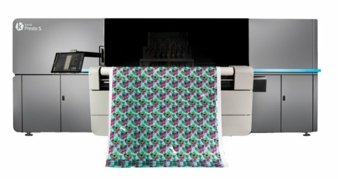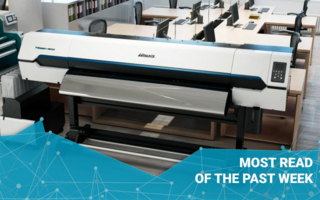04/01/2021 – The touch of sustainable fashion on demand — auf Deutsch lesen
Kornit NeoPigment Robusto Softener
The comfort that fashion should offer now has priority. Additionally, the criticisms against “fast fashion” have been gaining for some time now.
Fashion-conscious consumers have changed their purchasing behavior. The “look” itself is no longer the only important factor. The comfort that fashion should offer now also has priority. The softness of the textile is an important parameter for comfortable clothing. In fact, softness is a basic prerequisite for comfortable clothing. The wearer must perceive softness, to trigger their decision to purchase the garment. Additionally, the criticisms against “fast fashion” have been gaining for some time now.
Environmentally savvy shoppers are increasingly conscious of the implications of fast fashion on landfills, labor, and general waste that sees some brands burning unused stock. But from fast fashion to high-end luxury apparel and everything in between, a lesser-known process continues to do lasting damage: the environmental impact of textile finishing – including softening of the fabric – which also affects our health.
What is textile softening?
Textile finishing is the process of treating a textile to give it a number of qualities, such as moisture wicking, softness, stain resistance, and durability. It is one of the most polluting sides of one of the most polluting industries, with 25 percent of global chemical output stemming from textiles alone – and the chemicals used are often far from being safe. The softness of your yoga pants can be credited to siloxanes: synthetic compounds that build up in the environment and harm aquatic life. Your shirt is wrinkle-free thanks to formaldehyde, a known carcinogen that can trigger allergic reactions and contact dermatitis in people with sensitive skin. And that water-repellent jacket? Courtesy of perfluorinated chemicals, which can bioaccumulate in the body and cause diseases and increased mortality in animals.
To create a permanent change here, fashion brands need cleaner options, and that’s where Kornit comes in. The company is working to eliminate the need for toxic chemistry and evolve the way clothing is made – for the better.
Why is softness a crucial process in textile production?
Softeners have gained great importance in textile finishing; almost no piece of textile leaves the production facilities without being treated with a softener. This softening treatment gives the textiles the desired hand feel simplifies further processing, and improves the handling properties. A nice, soft hand feel is often a key criterion for buying a textile, and is therefore of most vital importance for marketing many textiles.
How is softness achieved today?
To obtain the desired softness in a cotton textile, several factors must be engineered in the product from the beginning. The first consideration is the structural composition of the fabric. Another consideration is how the fabric is mechanically handled during the preparation, dyeing, and finishing processes. Chemicals used in preparation, dyeing, and finishing will likewise affect the aesthetics. Often garments are post-treated not only to control shrinkage of the final product, but also to soften the hand feel. Many decisions need to be made to achieve the desired product. Some of the considerations are often based on the product desired, specifications required, cost, and the equipment available at the finishing plant.
To change the hand properties of a fabric, mechanical, physical, chemical, or combined techniques can be applied; that means there are multiple steps involved in the process, including machinery, labor, and time.
As a general rule, the softening agents applied are hygroscopic or lubricating agents, which facilitate the fibre sliding within the fabric structure, thus granting easier deformation and creasing of the fabric. In most cases, the duration of the effect is limited since the products applied during the treatment are eliminated by subsequent washing; for this reason, they must be applied in the final stage of the treatment.
The most common softeners include:
Non-Ionic Softeners
Anionic Softeners
Cationic Surfactants
Silicone-Based Softeners
Reactive Softeners
Kornit’s innovative softener solution
Integrating with Kornit Presto’s industry-best single-step print process, the Kornit NeoPigment Robusto dry digital Softener eliminates barriers between waterless, digital pigment decoration and the growing challenges of fashion on demand, opening a world of business opportunities with vibrant colors, intricate design capabilities, and a fabric touch that is second to none.
Kornit’s Softner solution is applied seamlessly during the printing process. No additional time, labor, or equipment is needed, and most importantly, it is a sustainable solution carrying Eco Passport certification and GOTS verification.
Kornit Presto and its inline Softener solution offer a Smart and Sustainable Fashion.
The Smart Solution – Integrated, efficient, single-step solution
From analog to digital in a single dry step: Eliminate setup and sampling times with an efficient, single-step solution. Print and soften any design to most fabrics, on demand, using a single ink set.
The Sustainable Solution – Produce on demand, to reduce your waste and ecological impact
The only dry digital solution: Meet the highest sustainability standards with Kornit’s Eco Passport-certified and GOTS-verified pigment inks. Produce on demand, to eliminate production and inventory waste.
The Fashionable Solution – Expand your business with fashion quality
Garments that look and feel their best: Regardless of fabric type, give customers more vibrant colors, and the widest color gamut, without sacrificing the fashion industry’s most demanding standards of touch. Grow your customer base with responsibly-made apparel fit for any runway.
The NeoPigment Robusto Softener is currently available for Kornit’s Presto system.




